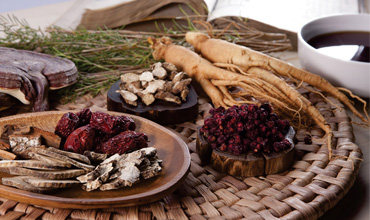Mapping Clinical Evidence of Herbal Medicine for Translation to Clinical Practice in Nigeria: The Case of Anti-Malarial Herbal Medicines

Abstract:
There has been an astronomical
rise in the cost of developing drugs in the last four decades. This has had a
resultant effect on public health and Nigeria is particularly negatively
affected. As the world spends more money on drugs’ R&D, the volume of
innovative synthetic drugs dwindles. This trend points to the necessity for a
paradigm shift in drug development strategy.
Although herbal medicines offer a wide
diversity of medicinal properties and have proven to be a boom for therapies,
its clinical evidence mapping is largely lacking and thus cannot be integrated
into Nigerian public health structures. Also, there is a high incidence ranking
of malaria in Nigeria, and clinical evidence mapping of herbal anti-malarias
might be the innovation to improve malaria control and elimination programs.
Few or no studies have illustrated methods to engage
herbal medicine clinics in Africa and perhaps none in Nigeria on ways to
describe and evaluate clinical use of herbal medicines as anti-malarial in
patients. Observational clinical studies
could be carried out to estimate the efficacy and toxicities of herbal
anti-malarias in clinical protocols and thus document any adverse effects. This should provide the needed
opportunity to measure patient outcome in malaria patients exposed to the
herbal drug in a clinical setting. This
paper discuses the challenges to drug development in weak and fledgling
economies, the dearth of clinical research on herbal anti-malarial therapies
and the prospects of herbal clinical
research to malaria control and
public health in Nigeria.
Key words: Herbal anti-malaria,
Malaria, Herbal medicines’ clinical evidence research, Drug development and
Public health
References:
[1]. Berger, M. L.,
Dreyer, N., Anderson, F., Towse, A., Sedrakyan, A., Normand, SL., (2012)
Prospective Observational Studies to Assess Comparative Effectiveness: The
ISPOR Good Research Practices Task Force Report. value in health; 1 5, 2 1 7 –
2 3 0
[2]. Booth B, Zemmel R. (2004).
Prospects for productivity. Nature Reviews Drug Discovery; 3(5): 451-456.
[3]. Bunnage M.E. Getting
pharmaceutical R&D back on target. Nature Chemical Biology 2011;
7(6):335-339.
[4]. DiMasi JA, Hansen
RW, Grabowski HG. The price of innovation: new estimates of drug development
costs. Journal of Health Economics 2003; 22(2):151-185.
[5]. DiMasi JA. Risks in
new drug development: approval success rates for investigational drugs.
Clinical Pharmacology and Therapeutics 2001; 69(5): 297-307.
[6]. Dondrop AM, Nosten
F, Yi P, Das D, Phy AP, Taming J, et al. (2009). Artemisinin Resistance in
Plasmodium falciparum malaria. N.Engl. J. Med. 361:455-67
[7]. Graz, B.,
Elisabetsky, E., and Falquet, J., (2007). Beyond the myth of expensive clinical
study: Assessment of traditional medicines Journal of Ethnopharmacology 113
382–386
[8]. Graz, B. Falquet J. Diallo,
D. Willcox, M. Giani S., (2005) Letter to the Editor: Screening of traditional
herbal medicine: First, do a retrospective study, with correlation between
diverse treatments used and reported patient outcome Journal of
Ethnopharmacology101 338–339
[9]. Graza B., Falquet
J., Elisabetsky, E., (2010). Ethnopharmacology, sustainable development and
cooperation: The importance of gathering clinical data during field surveys
Journal of Ethnopharmacology 130 (2010) 635–638
[10]. Graz B., Willcox,
M. L., Diakite, C., Falquet, J., Dacku, F., Sidibe, O., Giani, S., Diallo, D.,
(2009). Argemone mexicana decoction versus artesunate-amodiaquine for the
management of malaria in Mali: policy and public-health implications. Trans R
Soc Trop Med Hyg doi:10.1016/j.trstmh.2009.07.005
[11]. Maiers, M.,
McKenzie, E., Evans, R., and McKenzie, M. (2009). The Development of a
Prospective Data Collection Process in a Traditional Chinese Medicine Teaching
Clinic; The Journal Of Alternative And Complementary Medicine, 15(3), 2009, pp.
305–320. DOI: 10.1089/acm.2008.0224
[12]. Medical Research
Council. (MRC ; 2000). A Framework for the Development and Evaluation of RCTs
for Complex Interventions to Improve Health . London.
[13]. Osterbauer P,
McKenzie M, McKenzie E, Evans R. (2004). Patient Characteristics in the Edith
Davis Acupuncture and Oriental Medicine Teaching Clinic. 10-1-2004. San
Francisco, CA: Society for Acupuncture Research.
[14]. The Pharmaceutical
Research and Manufacturers of America, (PhRMA, 2011). 2011 profile: pharmaceutical
industry http://www.phrma.org/sites/default/fi les/159/phrma_profile_2011_final.pdf, (April 2011).
[15]. Takala-Harrison S,
Jacob CG, Arze C, Cummings MP, Silva JC, Dondrop AM, et al. (2014). Independent
emergence of Arteminisin resistance mutations among
Plasmodium falciparum in Southeast Asia. J. Infect Dis. Epub ahead of print.
[16]. Taylor, S. M.,
Parobek, C. M., DeConti, D. K., Kayentao, K., Coulibaly, S. O., Greenwood, B.
M., Tagbor, H., Williams, J., Bojang, K., Njie, F., Desai, M., Kariuki, S.,
Gutman, J., Mathanga, D. P., Mårtensson, A., Ngasala, B., Conrad, M. D.,
Rosenthal, P. J., Tshefu, A. K., Moormann, A. M., Vulule, J. M. Doumbo, O. K.,
ter Kuile, F. O., Meshnick, S. R. Bailey, J. A. and Juliano, J. J.; (2014)**
Absence of Putative Artemisinin Resistance Mutations Among Plasmodium
falciparum in Sub-Saharan Africa: A Molecular Epidemiologic Study. The Journal
of Infectious Diseases 2015; 211:680–688. DOI: 10.1093/infdis/jiu467 **(The
Author 2014; Published by Oxford University Press on behalf of the Infectious
Diseases Society of America).
[17]. WHO, (2000). Severe
falciparum malaria. Transactions of the Royal Society of Tropical Medicine and
Hygiene, 94(Suppl. 1):1–90.
[18]. WHO, (2003).
Traditional Medicine; Fact sheet no.134, revised 2003
[19]. WHO (2010). World
Health Organization, Geneva. WHO World Malaria Report, 2010
[20]. WHO
(2014). World Health Organization, Geneva. WHO World Malaria Report, -Nigeria
Health profile-WHO, 2014)
[21].WHO (2015)
Q&A on artemisinin resistance http://www.who.int/malaria/media/artemisinin_resistance_qa/en/
[22].WHO
(Ed.). (2013). WHO traditional
medicine strategy, 2014-2023. Geneva: World Health Organization (WHO).
[23].Willcox M. L. (1999).
A clinical trial of ‘AM’,
a Ugandan herbal remedy for malaria.
Journal of Public Health Medicine; 21(3), pp.
318–324
[24].Willcox,
M. L., Graz, B., Falquet, J., Diakite, C., Giani, S., Diallo, D., (2011). A
“reverse pharmacology” approach for developing an anti-malarial phytomedicine;
Malaria Journal, 10(Suppl 1):S8 http://www.malariajournal.com/content/10/S1/S8
[25].Woodcock J, Woosley R. The FDA critical
path initiative and its influence on new drug development. Annual Review in
Medicine 2008; 59:1-12.
[26].Xing,
M., Long A.F., (2006). A retrospective survey of patients at the University of
Salford Acupuncture Clinic; Complement Ther Clin Pract 2006;12:64–71.

